Concawe Review
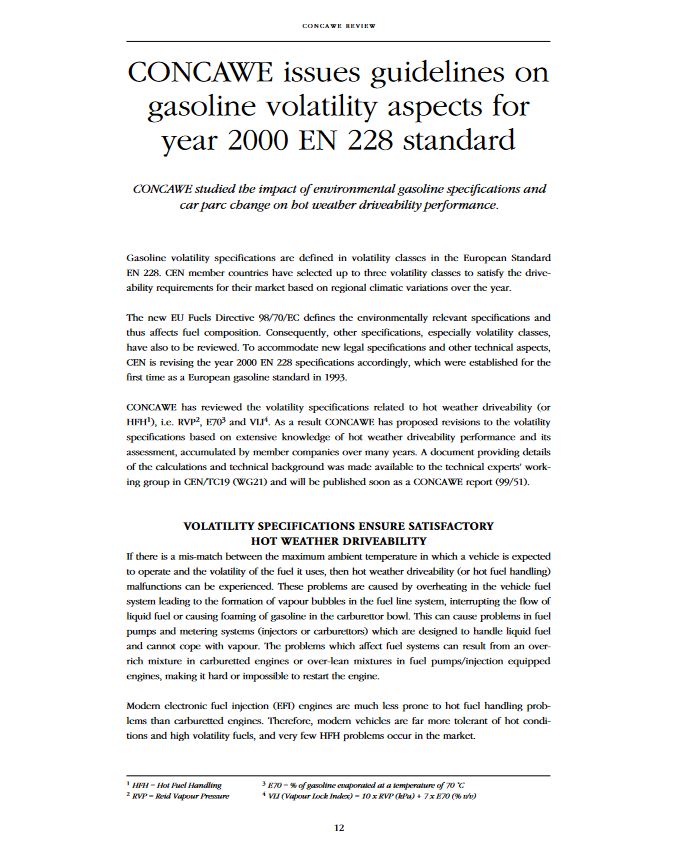
Concawe Reviews
CONCAWE issues guidelines on gasoline volatility aspects for year 2000 EN 228 standard
Gasoline volatility specifications are defined in volatility classes in the European Standard EN 228. CEN member countries have selected up to three volatility classes to satisfy the driveability re...
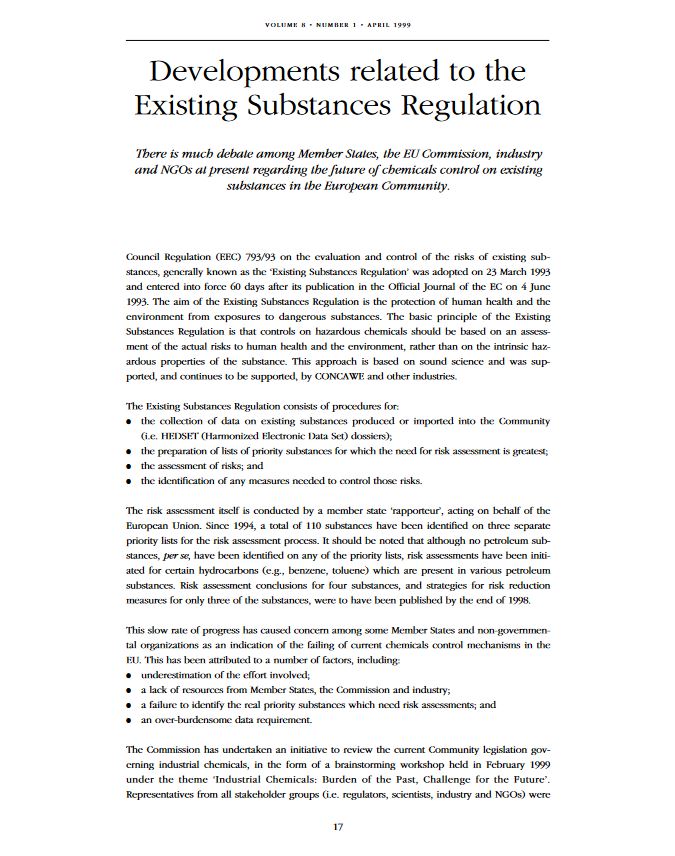
Concawe Reviews
Developments related to the Existing Substances Regulation
Council Regulation (EEC) 793/93 on the evaluation and control of the risks of existing substances, generally known as the ‘Existing Substances Regulation’ was adopted on 23 March 1993 and entere...
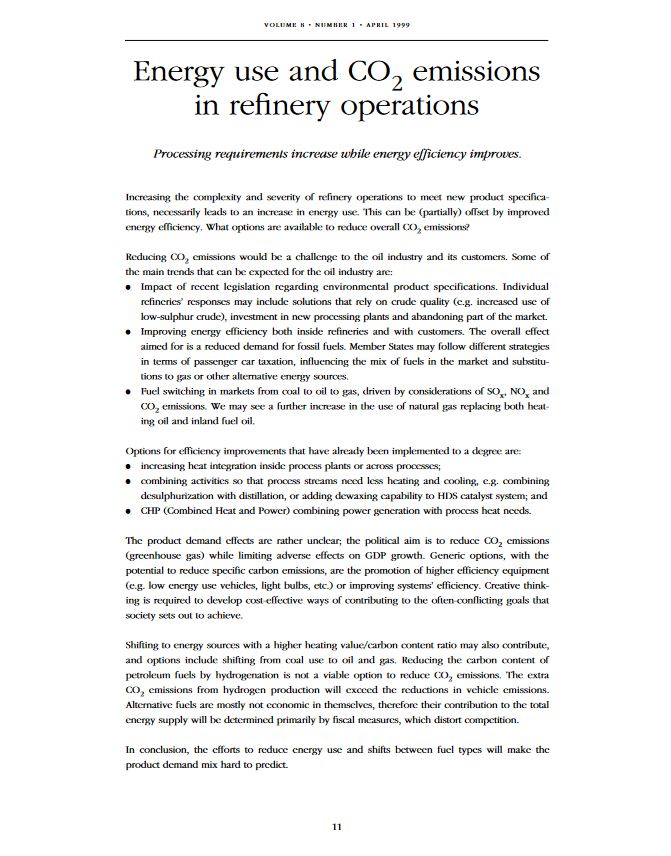
Concawe Reviews
Energy use and CO2 emissions in refinery operations
Increasing the complexity and severity of refinery operations to meet new product specifications, necessarily leads to an increase in energy use.
This can be (partially) offset by improved energy e...
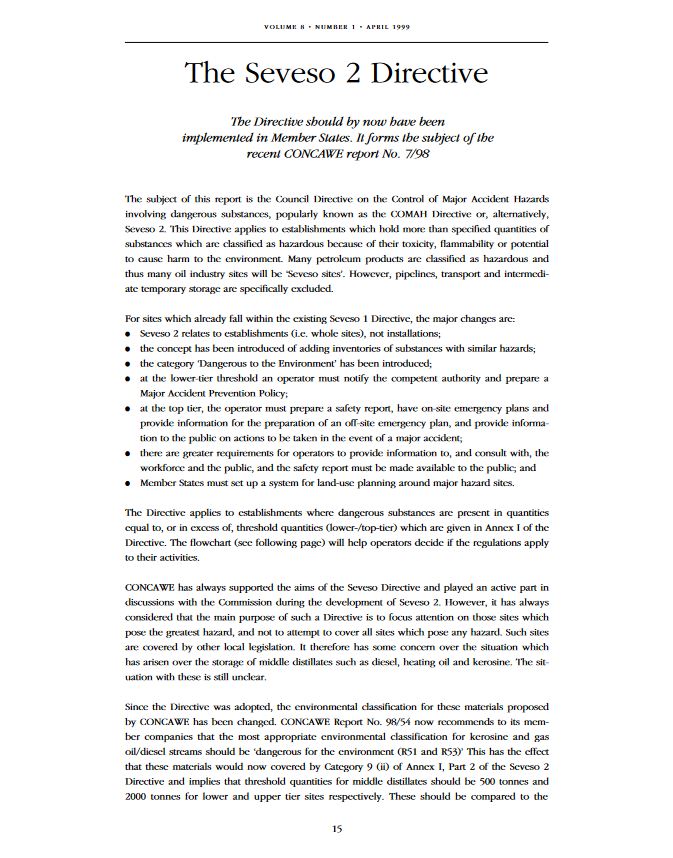
Concawe Reviews
The Seveso 2 Directive
The subject of this report is the Council Directive on the Control of Major Accident Hazards involving dangerous substances, popularly known as the COMAH Directive or, alternatively, Seveso 2. This...
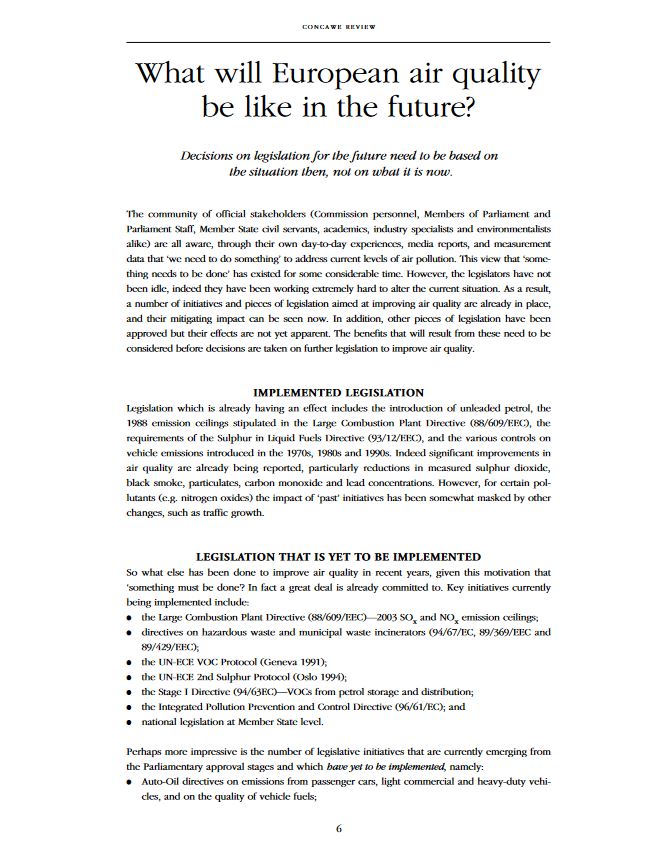
Concawe Reviews
What will European air quality be like in the future?
The community of official stakeholders (Commission personnel, Members of Parliament and Parliament Staff, Member State civil servants, academics, industry specialists and environmentalists alike) ar...
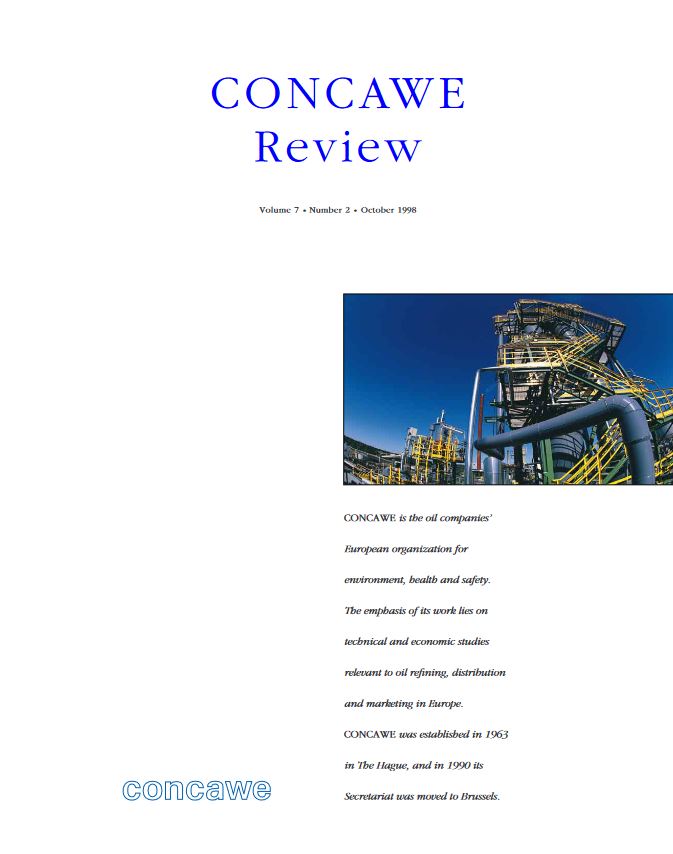
Concawe Reviews
CONCAWE Review – Autumn 1998
Volume 7 • Number 2: Dear Reader,
Agreement has now been reached between the Environment Council and the European Parliament on the 2000/2005 emission standards for passenger cars and light comm...
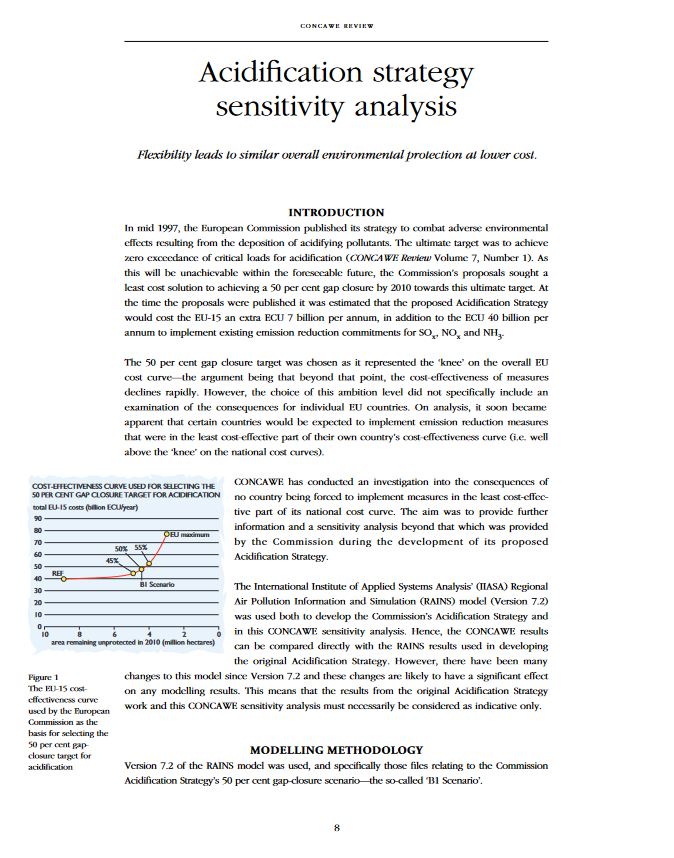
Concawe Reviews
Acidification strategy sensitivity analysis
In mid 1997, the European Commission published its strategy to combat adverse environmental effects resulting from the deposition of acidifying pollutants. The ultimate target was to achieve zero exce...
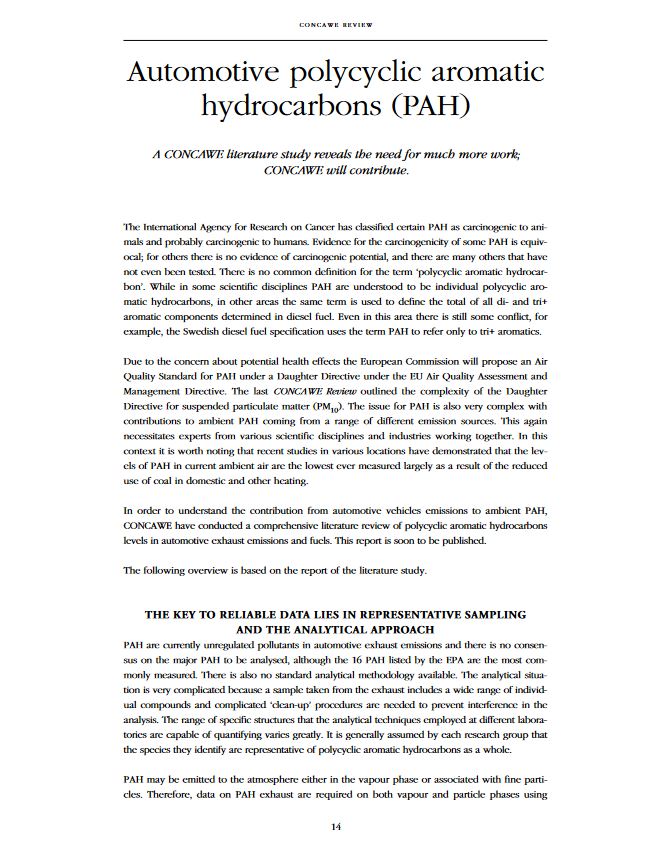
Concawe Reviews
Automotive polycyclic aromatic hydrocarbons (PAH)
The International Agency for Research on Cancer has classified certain PAH as carcinogenic to animals and probably carcinogenic to humans. Evidence for the carcinogenicity of some PAH is equivocal;for...
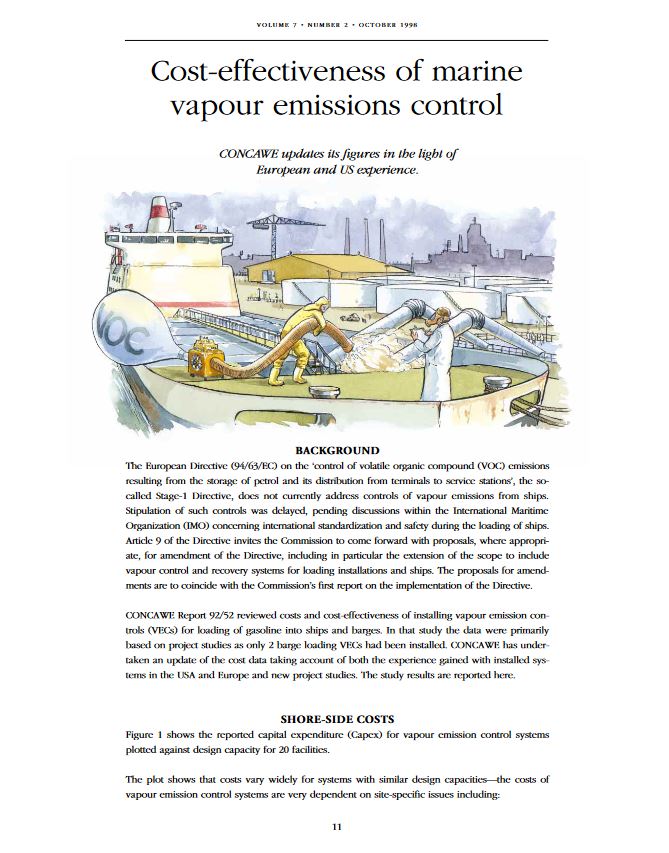
Concawe Reviews
Cost-effectiveness of marine vapour emissions control
The European Directive (94/63/EC) on the ‘control of volatile organic compound (VOC) emissions resulting from the storage of petrol and its distribution from terminals to service stations’, the so...
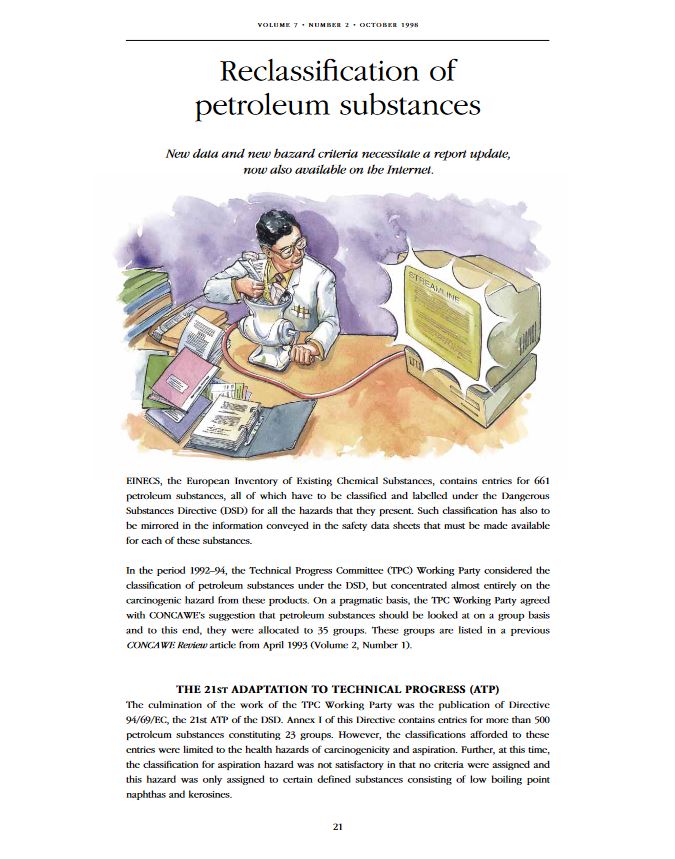
Concawe Reviews
Reclassification of petroleum substances
EINECS, the European Inventory of Existing Chemical Substances, contains entries for 661 petroleum substances, all of which have to be classified and labelled under the Dangerous Substances Directiv...
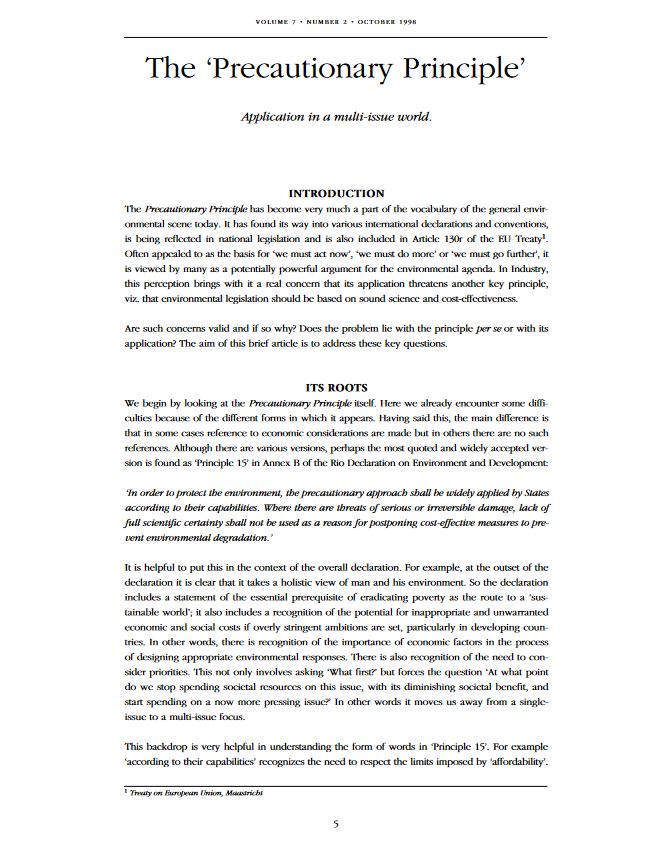
Concawe Reviews
The ‘Precautionary Principle’
The Precautionary Principle has become very much a part of the vocabulary of the general environmental scene today. It has found its way into various international declarations and conventions, is bei...
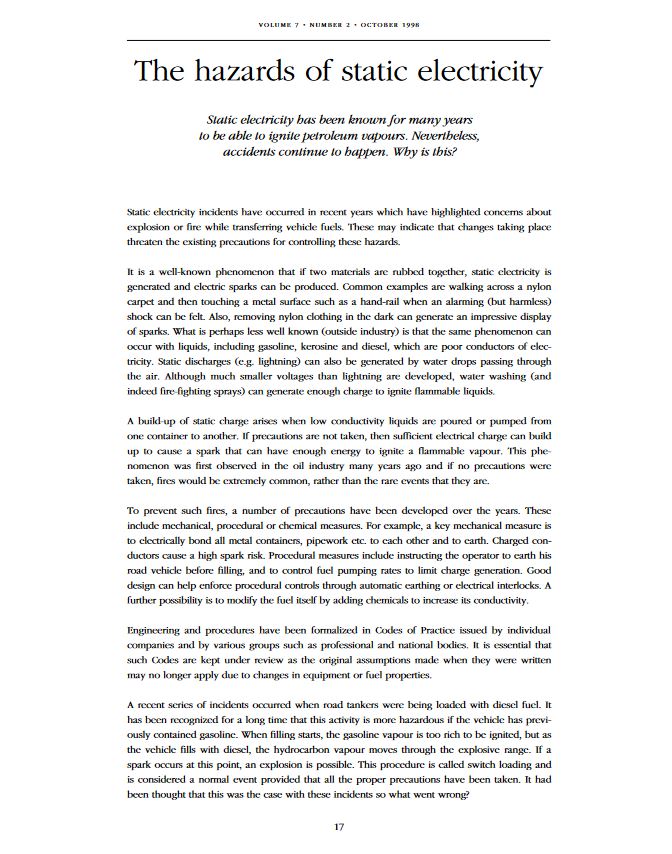
Concawe Reviews
The hazards of static electricity
Static electricity incidents have occurred in recent years which have highlighted concerns about explosion or fire while transferring vehicle fuels. These may indicate that changes taking place threat...
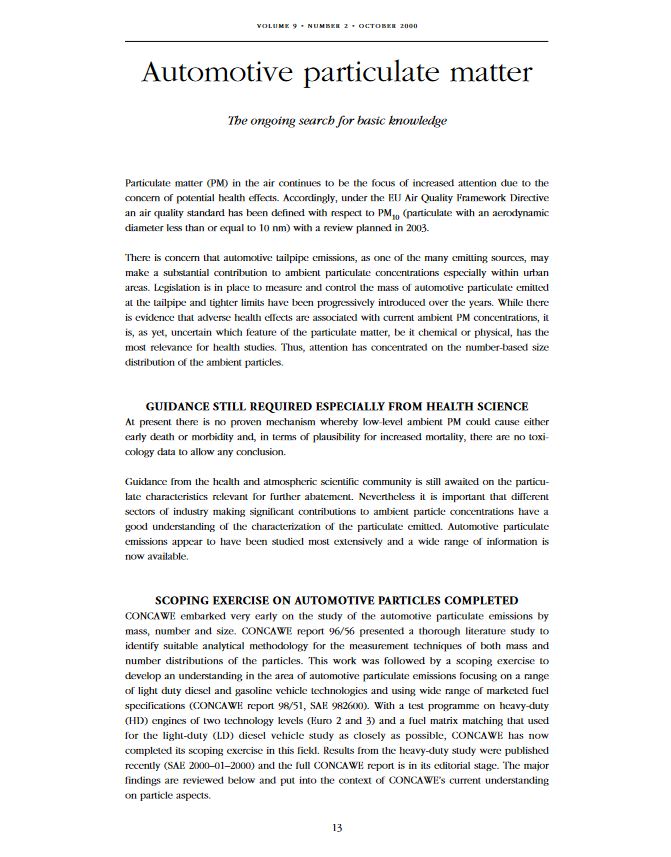
Concawe Reviews
Automotive particulate matter
Particulate matter (PM) in the air continues to be the focus of increased attention due to the concern of potential health effects. Accordingly, under the EU Air Quality Framework Directive an air q...
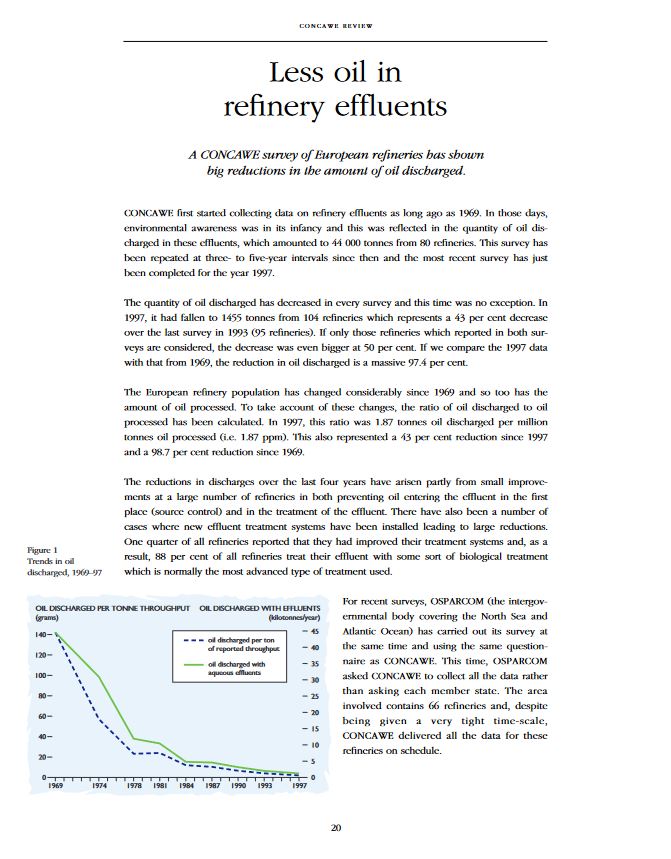
Concawe Reviews
Less oil in refinery effluents
CONCAWE first started collecting data on refinery effluents as long ago as 1969. In those days, environmental awareness was in its infancy and this was reflected in the quantity of oil discharged in...